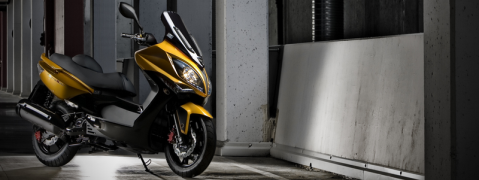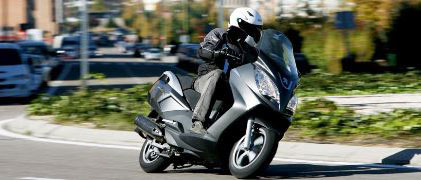 Peugeot Satelis - Service manual > Symbols, Characteristics, Service Schedule
Peugeot Satelis - Service manual > Symbols, Characteristics, Service Schedule
PRODUCTS DANGER SYMBOLS USED
Protection of individuals and of the environment.


CHARACTERISTICS
Engine

Capacities

Chassis

Dimensions and weight

Tyres

Chassis markings

- Manufacturer's plate. (Left side).
- VIN number of the RH side of the vehicle
Engine marking

- Engine number
SERVICE SCHEDULE AND COMMISSIONING
Heavy duty servicing is for vehicles used under "harsh" conditions: door-to-door deliveries, intensive urban use (courier), short journeys with engine cold, dusty areas, ambient temperature over 30ºC.

Check

Change


Check and lubricate

Reading the ECU fault codes

Test machine

Time required for maintenance

C: Check.
N: Clean.
R: Change.
G: Check and lubricate.
* Depending on equipment.
# Change if necessary.
Battery preparation (Except battery without maintenance)*
Remove the battery.
Remove the 6 filler caps and the vent plug.
Fill all the battery cells with electrolyte to the upper level shown on the battery "UPPER LEVEL".
Electrolyte: (35 sulfuric acid = 1.28g/cm3).1 litre can P/N 752740. 5 litre can P/N 752741.
Leave the battery to stand for around half an hour.
Top up if necessary.
Charge the battery for at least 2 hours with a current of 1.4 A.
Refit the battery and connect the vapour vent pipe.
Connect the red wire lug to the battery's + terminal, and the green wire lug to the battery's - terminal.
Then, the battery level should be topped up if necessary, after fully charging, using distilled water only.
Checks before handing over to the customer
Check the wheel nuts are tight.
Check nuts and bolts are tight.
Check brake adjustment and efficiency.
Check the tyre pressures cold.
Check operation of the lights, flashers, horn, and brake light.
Check the different warning lights work.
Carry out a road test.
* Depending on equipment.
SPECIAL IMPORTANT POINTS
Oil and fuel
 This engine is designed to run on 95 or 98 unleaded fuel only.
This engine is designed to run on 95 or 98 unleaded fuel only.
 Fuel pipes must absolutely be changed if there are any signs of wear, cracks, etc.
Fuel pipes must absolutely be changed if there are any signs of wear, cracks, etc.
The clips are specific, they must always be changed each time they are removed and replaced with new genuine parts clips.
 Petrol is highly inflammable, do not smoke in the working area and avoid proximity to flames or sparks.
Petrol is highly inflammable, do not smoke in the working area and avoid proximity to flames or sparks.
Before carrying out any work, leave the engine to cool for at least 2 hours.
Starting up after overhauling the engine
When starting the engine hot or cold do not accelerate.
Check the coolant level in the header tank.
After road-testing the machine, check there are no fault codes left in the ECUs (using the diagnostic tool).
Electricity
All components of the electrical system are powered with 12 volts DC.
The battery must not be disconnected while the engine is running and the voltage must be at least 7 volts for the ECU to function and enable engine starting.
Special features
An immobiliser built in the ECU provides the antitheft function by means of a transponder.
The ECU has a diagnostic function which via the instrument cluster LED or the diagnostic tool, enables reading of the faults in the memory.
TIGHTENING TORQUES
Engine part

Body panels

Cycle part.

Standard

SPECIAL TOOLS

(*) New or modified tool
Standard tools









